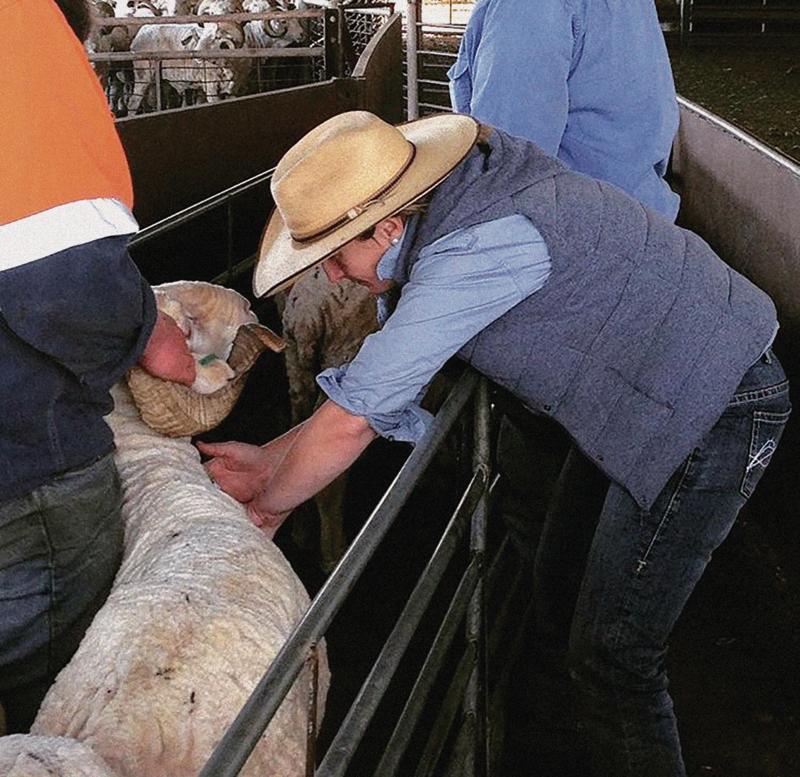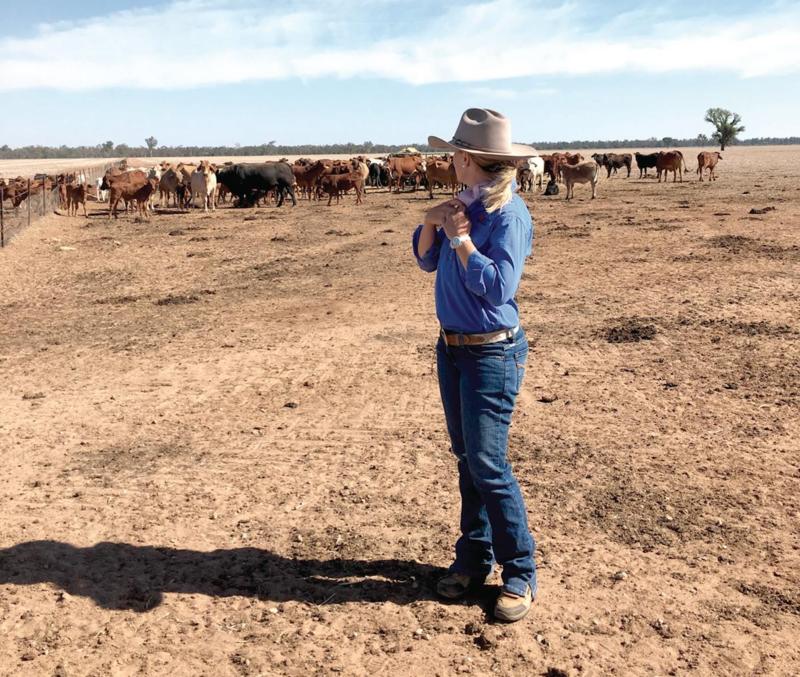6.00am
I like to be up at first light so I can get a few jobs done on my property before the day starts. I have 40 hectares not far from town, where I run 10 steers, so I check them every morning and fill up their lick feeders. I give my dog, Toby, a good run before breakfast. He’s a Jack Russell-greyhound cross I found at the Tamworth Veterinary Hospital. Nobody seemed to want him, so I brought him home and he’s been with me for the past 13 years. He’s a great dog. I also feed my bay Quarter Horse mare, Special, who I take campdrafting on the weekends. It’s a massive sport out here. We love it.
7.30am
By now I’m in the car on my way to my first job. Today it’s a breakfast seminar at the Tooraweenah pub for 22 farmers. It’s terribly dry out here and I talk about the science behind feeding during dry times. I think farmers can get bogged down trying to decide what to feed during a drought, especially when they run out of feed. Hay can be hard to get and a lot of people are buying hay from Victoria. They’re also considering rice straw and things they’ve never fed before. The beauty of
Local Land Services is that we have district vets in each of our offices and livestock officers spread around the state, so there’s always someone farmers can go to for advice. We publish a lot of resources on our website, but seminars like this are helpful.
*READ the story of Central West sheep farmers Wayne and Lynette Culverson who are remaining positive during drought despite having to feed livestock every day.
10.15am
I get a call-out about some dead sheep at a property back near Coonamble, so I drive across to see them. We are in the anthrax belt here and one of my main jobs as a district vet is to check for exotic and notifiable diseases. Investigating dead stock is a priority and this farmer has lost 14 sheep. He had been short of feed and put the sheep in a failed olive grove where he was cutting branches for them. I did post-mortems right there and found the sheep had rumens chock-full of olive seeds, which is what killed them. Losing stock is hard. One of the reasons we do so much advisory work is to try to offset disasters like this that can happen when things get very dry and people get desperate. I have a coffee and a chat with the farmer and we work out some alternative feeding options.
*READ: De-stocking: Farmers making the hard choices.
 Dr Kelly takes a blood sample from a sheep for disease investigation purposes.
*For more stories about farmers dealing with drought and adapting during dry conditions read, ‘Growing profits behind the wire’ and ‘Young gun farmer creates drought lifesavers’.
Dr Kelly takes a blood sample from a sheep for disease investigation purposes.
*For more stories about farmers dealing with drought and adapting during dry conditions read, ‘Growing profits behind the wire’ and ‘Young gun farmer creates drought lifesavers’.
12.30pm
I have another job booked about an hour’s drive away to look in on some cattle that are doing poorly and wasting away. I grab a takeaway lunch on the drive at the Quambone store. When I arrive, I can see the steers are doing very poorly. They’re dehydrated and wobbly on their feet. Immediately I suspect lead poisoning. Lead is something we are always on the lookout for because residues are so important to the safety of the food chain. I take samples from the affected cattle. When I get home, I will send them off to the lab. Our primary role is surveillance for emergency animal diseases, which is what we do for the government, but we’re very lucky in NSW. Here it is mostly green and clean.
*READ more about the importance of Australia’s clean green image for securing ongoing business with foreign trade partners, like China.
2.30pm
Next stop is an hour away on the western side of Coonamble, where I need to check out some bulls. We are doing a surveillance project right now for trichomoniasis, a reproductive disease that can affect cattle. It normally occurs in the Northern Territory and northern Queensland and is not known to be prevalent in NSW, but over the years there has been considerable animal trade between the states and no surveillance has been carried out for trichomoniasis in a long time. We need to know if it’s here or not, so we’ve been testing in the local area. I take samples from the bulls which will be sent off to the lab. We’ve had negative results from all the farms we’ve tested so far, which is good to know.
 Dr Jillian Kelly assesses the health of drought-affected cattle in the NSW Central West.
4.00pm
Dr Jillian Kelly assesses the health of drought-affected cattle in the NSW Central West.
4.00pm
I leave that farm and decide to drop in on another one on my way home. The farmer had been drought feeding his sheep lupins and barley straw but was finding they wouldn’t eat it for some reason. When I get there the sheep are just walking all over this hay. It is a huge waste for the farmer and he wonders what he might be doing wrong. I get him to lift the hay off the ground into feeders to keep the sheep from dirtying it up. I also take some samples to send off for testing to measure the quality of the feed. When I get the results back in five days I will be able to make recommendations about whether or not the lupins are a valuable feed.
5.30pm
I’m on my way home where I’ll get stuck into my veggie garden for a little while before having a beer on the verandah. I check emails and package the samples up to go to the lab.
6.15pm
Tonight there’s a committee meeting at the pub for our local stockman’s challenge and campdraft. I’m their publicity officer so my dog Toby and I go to the meeting and I have dinner at the pub afterwards.
9.00pm
I’m home in bed, where I’ll sleep well until the next morning when it all starts again.
*READ: A day in the life of a maggot farmer featuring Olympia Yarger who manages an insect farm Goterra, near Canberra.
COMBATING CATTLE TRITRICHOMONAS
What is it?
It is a venereal disease of cattle, which can cause infertility through early embryonic death and abortion. It is caused by a protozoan parasite, Tritrichomonas foetus. The parasites can infect the genital tracts of cattle during mating. They can also be spread by contaminated equipment used for calving or artificial insemination (AI), or if contaminated semen is used for AI. Bovine trichomoniasis is an uncommon disease in NSW and the other states of southern Australia. However, it is endemic to northern Australia, where a significant proportion of bulls may be infected.
How to prevent the disease:
There is no vaccine available for trichomoniasis in Australia and the best way to prevent your herd being infected is to have a biosecurity plan.
The plan may include:
- Requesting a Cattle Health Statement with the purchase of all cattle
- Purchasing all bulls from reputable studs
- Never buying bulls from saleyards
- Keeping boundary fences secure
- Testing any stock with an increased risk of infection, e.g. bulls from northern Australia, prior to purchase
- Virgin heifers or bulls are the safest options when introducing stock